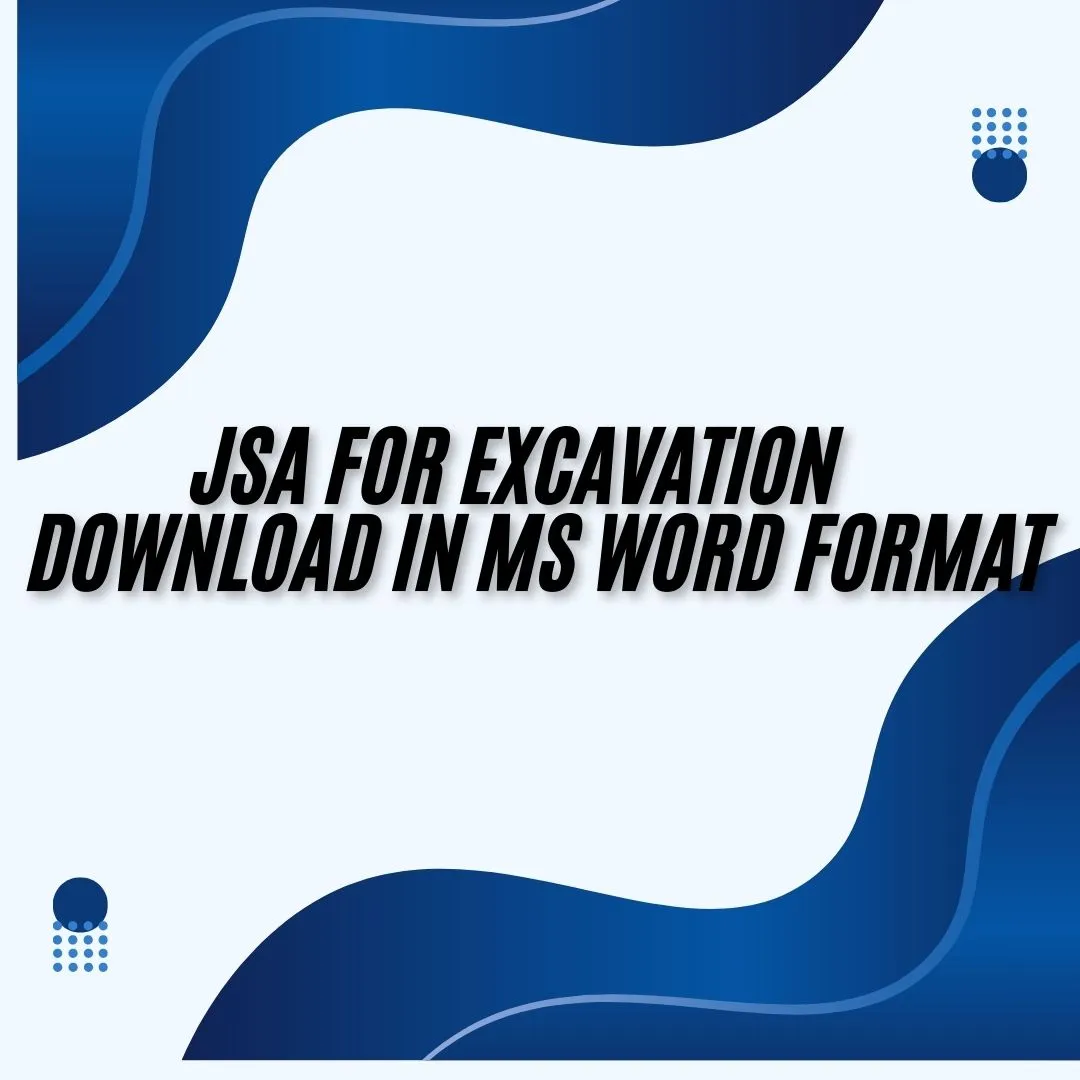The goal of a JSA for Excavation is to identify and mitigate hazards in the workplace so that everyone may operate in an environment free from harm. No matter how much or how little experience you have with excavation, following the JSA approach will make your task easier and safer.
Can You Explain the Excavation JSA?
In order to make excavation a safer environment, it is necessary to conduct a Job Safety Analysis (JSA) to identify potential hazards and establish appropriate controls. This methodology is essential in industries where excavation is a regular component of the operation because it ensures compliance with regulations and worker safety in a systematic way. Caving in, hitting utilities, being exposed to harmful chemicals, and falling debris are just a few of the hazards that could occur during excavation. Methodically, these risks are assessed using a comprehensive JSA, which checks every task for potential threats.
In your opinion, what are the five steps to a JSA?
There are typically five main steps to the JSA technique:
- Choose the spot that will be examined.
Before everything else, decide where you want to dig. Raise JSA’s efficiency by giving it a better go at risky or challenging tasks. - Create manageable portions by dividing the job into smaller ones.
Divide the enormous excavating task into smaller, more manageable portions. A comprehensive assessment of the project is guaranteed in this way. - Determine what might be harmful.
Make note of any dangers that may be present at each level. Underground utilities, unstable soil, and malfunctioning machinery are all potential dangers. - Determine a way to put a halt to it.
Figure out how to mitigate or eliminate the threats you’ve identified. Use of trench shields, utility markouts, and correct soil grading procedures are critical for safe excavation. - Evaluate the JSA and implement it.
Make sure everyone on the team knows what dangers are involved and how to prevent them before you share the JSA. It is critical to review and update the JSA on a frequent basis as the project advances and new information becomes accessible.

Key components of an JSA For Excavation
An exhaustive excavation JSA should address:
- The goal: For the purpose of writing a detailed report on the upcoming excavation.
- The purpose of hazard identification: To investigate the possible risks connected with each stage of the work process.
- Control strategies: actionable steps to reduce potential dangers. Some examples of these include stabilizing soil, utilizing equipment properly, and wearing personal protective equipment.
- Team collaboration: Employees’ ability to evaluate issues and provide practical solutions improves when they collaborate as a team.
- Documentation: The process should culminate in a signed copy of the JSA by all team members to guarantee comprehension and adherence.
To what extent does JSA apply to the excavation process?
A few of the numerous advantages of using a JSA when digging are:
- Safer Environment: Fewer accidents and injuries may result by being aware of such hazards beforehand.
- Compliance with Regulations: When a JSA is executed correctly, it guarantees adherence to all safety regulations, including those set out by OSHA.
- Improved Efficiency: Early detection of possible concerns can improve a project’s efficiency.
- Boosted Confidence: Assuring employees that their safety is our first priority boosts their confidence.
A JSA is a lifesaver when it comes to making sure excavation operations run smoothly and safely. Choosing the task, breaking it down into phases, identifying dangers, implementing preventive measures, and assessing the analysis are the five processes that make up a task safety analysis (JSA). Construction crews may reduce hazards and maintain a safe working environment by adhering to these protocols. Without a well-implemented JSA, no one can do their share to guarantee safety, which is everyone’s responsibility.

